Exhibition at The Met to present the Howard Hodgkin Collection of Indian court painting
NEW YORK, NY.- Widely regarded as one of the finest of its kind, British artist Howard Hodgkin’s collection of Indian paintings includes works created at the Mughal, Deccan, Rajput, and Pahari courts dating from the 16th to the 19th century. Opening at The Metropolitan Museum of Art on February 6, 2024, the exhibition Indian Skies: The Howard Hodgkin Collection of Indian Court Painting presents a unique and personal vision of India’s great painting tradition through newly acquired works from the artist’s collection. In 2022, The Met announced a major acquisition of more than 80 drawings and paintings from the Howard Hodgkin Collection.
The exhibition is made possible by the Florence and Herbert Irving Fund for Asian Art Exhibitions, and the Friends of Islamic Art.
Max Hollein, The Met’s Marina Kellen French Director and CEO, commented: “Howard Hodgkin’s extraordinary collection of Indian paintings features stunning portraits along with beautifully detailed text illustrations, studies of the natural world, and devotional subjects that are sure to captivate visitors to The Met. The collection was interwoven with the artist’s life—and his experiences in India and his relationships with scholars and artists of Indian art—and often inspired his own creative output. This exhibition celebrates the brilliance and power of these tremendous paintings and offers a glimpse into the artist’s unique vision and passion for one of the world’s great pictorial tradition. We are thrilled to present the works that have recently joined our collection and extend our thanks to The Howard Hodgkin Indian Collection Trust for lending additional important works.”
John Guy, Florence and Herbert Irving Curator of South and Southeast Asian Art at The Met, said: “Two counterpoints are reflected and refracted in Hodgkin’s collection. First the quiet naturalism of the Persianate aesthetic of Mughal paintings, witnessed in portraiture and nature studies and second, as exemplified in the Rajput and Pahari court traditions, a celebration of the radiant energy of the Indian landscape. Here scenes are filled with the saturated colors of the earth and exuberant greenery, skies filled with the looming darkness of rain-laden monsoon clouds. These are vibrant emotive paintings, evocative of place and time, winter and summer, day and night.”
Navina Najat Haidar, Nasser Sabah al-Ahmad al-Sabah Curator in Charge of Islamic Art at The Met, said: “Exciting moments from epic narratives; emotionally touching images such as a family of embracing elephants; and sharply observed portraits of kings and courtiers, are among the works to be enjoyed.”
An Elephant and Keeper, India, Mughal, ca. 1650-60. Opaque color and gold on paper. Howard Hodgkin Collection, Purchase, Florence and Herbert Irving Acquisitions, Harris Brisbane Dick, and 2020 Benefit Funds; Howard S. and Nancy Marks, Lila Acheson Wallace, and Friends of Islamic Art Gifts; Louis V. Bell, Harris Brisbane Dick, Fletcher, and Rogers Funds and Joseph Pulitzer Bequest; and funds from various donors, 2022 (2022.187).
Exhibition Overview
The exhibition will present over 120 examples of Indian court paintings assembled by Hodgkin over a lifetime of collecting. This highly individual collection represents the artist’s response to the color, subject matter, and the emotive content of Indian painting. The exhibition will comprise works newly acquired by the Museum and will be supplemented by loans from The Howard Hodgkin Indian Collection Trust.
Underlying Hodgkin’s eclectic collection—which includes portraits, palace scenes, royal hunts, illustrations to religious epics, devotional subjects, and nature studies—are several unifying themes that reflect Hodgkin’s preferences for compositions that convey narrative drama, poetic allusion, and emotional intensity. He also had a predilection for elephants rendered as portraits and in action.
The exhibition reflects Hodgkin’s personal taste while remaining true to the scholarly traditions around Indian painting. The paintings will be arranged in a chronological sequence by school, starting with the earliest works of the 16th-century Mughal era and related Deccani works, followed by the later Rajput and Pahari schools. A third space is given over to the celebration of the elephant paintings, which span all schools. The presentation will also include Hodgkin’s paintings Small Indian Sky and In Mirza’s Room, which will be shown in association with related Indian works, alluding to the subtle relationship between Hodgkin’s own work, India, and his collection.
Indian Skies: The Howard Hodgkin Collection of Indian Court Painting is co-curated by John Guy, Florence and Herbert Irving Curator of South and Southeast Asian Art, and Navina Najat Haidar, Nasser Sabah al-Ahmad al-Sabah Curator in Charge of Islamic Art, at The Met.
Marriage procession in a bazaar, Mandi, Punjabi Hills, around 1640-50. Howard Hodgkin Collection, Purchase, Florence and Herbert Irving Acquisitions Fund for Asian Art, by exchange; Florence and Herbert Irving Acquisitions and 2020 Benefit Funds; Howard S. and Nancy Marks Gift; Louis V. Bell, Harris Brisbane Dick, Fletcher, and Rogers Funds and Joseph Pulitzer Bequest; and funds from various donors, 2022. Image © Ashmolean Museum, University of Oxford
This panoramic view of a wedding procession through the prosperous bazaar, a masterpiece of descriptive detail and spatial organization, is a folio from a large narrative series illustrating a marriage described in one of the Hindu epics. The unnamed Mandi painter, likely Mughal trained, displays a heightened awareness of Mughal treatments of many components of the picture, such as the striding elephant, the horses in movement, and the clusters of onlookers, who are individualized, as if portraits of known persons. True to Pahari traditions, however, the urban streetscape has multiple points of focus, with rooftops and shop fronts displaying their wares in abundance, all accommodated in a jagged array of projecting structures.
Haidar 'Ali & Ibrahim Khan, Sultan Muhammad 'Adil Shah & Ikhlas Khan riding an elephant, Bijapur, Deccan, around 1645. Howard Hodgkin Collection, Purchase, Florence and Herbert Irving Acquisitions Fund for Asian Art, by exchange; Florence and Herbert Irving Acquisitions and 2020 Benefit Funds; Howard S. and Nancy Marks Gift; Louis V. Bell, Harris Brisbane Dick, Fletcher, and Rogers Funds and Joseph Pulitzer Bequest; and funds from various donors, 2022. Courtesy Metropolitan Museum of Art.
This painting depicts Sultan Muhammad ‘Adil Shah of Bijapur, and his prime minister, Ikhlas Khan. They sit together on a striding elephant, with Ikhlas Khan riding behind the Sultan, positioned in an emblematic display of the real power behind the throne. The double portrait of these two eminent figures from the Deccan is enhanced by the signature of the two artists who completed the work—Haidar ‘Ali and Ibrahim Khan, who signed their names at left.
Prince Aurangzeb, c. 1653–55. Opaque watercolor and gold on cloth, 37.3 × 272 cm (image). Howard Hodgkin Collection, Purchase, Florence and Herbert Irving Acquisitions, Harris Brisbane Dick, and 2020 Benefit Funds; Howard S. and Nancy Marks, Lila Acheson Wallace, and Friends of Islamic Art Gifts; Louis V. Bell, Harris Brisbane Dick, Fletcher, and Rogers Funds and Joseph Pulitzer Bequest; and funds from various donors, 2022. Courtesy Metropolitan Museum of Art.
This profile portrait of Prince Aurangzeb (later Emperor `Alamgir "World Seizer" r. 1658–1707) was likely created during one of his terms as viceroy of the Deccan. At this time, the future emperor had established a base at the site that he named for himself—Aurangabad (formerly Khirki). This painting would have been produced by a Mughal-trained artist in the Prince’s palace workshop. This work is an important stylistic bridge between the worlds of the Mughals in the north, and the Deccani Sultans in the central plateau of India. The work is Mughal in its portrait style, and yet has been produced on cloth, a medium more typical of the Deccan, where it was produced.
Sultan 'Ali 'Adil Shah shooting an arrow at a tiger, Bijapur, Deccan, around 1660. Howard Hodgkin Collection, Purchase, Florence and Herbert Irving Acquisitions Fund for Asian Art, by exchange; Florence and Herbert Irving Acquisitions and 2020 Benefit Funds; Howard S. and Nancy Marks Gift; Louis V. Bell, Harris Brisbane Dick, Fletcher, and Rogers Funds and Joseph Pulitzer Bequest; and funds from various donors, 2022. Courtesy Metropolitan Museum of Art.
This painting is one of only a few known portraits of Sultan ‘Ali ‘Adil Shah II of Bijapur, India (r. 1656–72). It depicts the ruler engaged in a demonstration of his hunting prowess-- iconography meant to illustrate his role as a strong leader. In reality the sultan was met with continual infiltrations by the rival Mughals and Marathas, and eventually left the affairs of the state to his minister. This fragmentary painting captures a moment when the sultan used his patronage of the arts to project an image of himself as an ideal and convincing ruler.
Maharaja Dhiraj Singh Riding, ca. 1700. Opaque watercolor and gold on paper, 56 × 35 cm (image). Howard Hodgkin Collection, Purchase, Gift of Florence and Herbert Irving, by exchange, 2022, 2022.239. Image © Ashmolean Museum, University of Oxford.
The youthful Dhairaj Singh (1697–1726) sits on his beautiful piebald stallion. Both rider and rearing horse are shown in profile, their elegant contours silhouetted against a lime green ground. The maharaja wears a white tunic (jama) with green floral designs, a matching waist sash (patka), and an orange turban tied in the Central Indian manner. He displays two swords and a punch dagger (katar). His stallion wears a simple harness and trappings, a white plume, and a braided mane. Although young, Dhairaj Singh had a reputation for valor that extended well beyond his domain; he was received by the rulers of Mewar and Jaipur and entered into marriage alliances with both families. Slain in combat at twenty-nine while subduing a rebellious clan, he is named in the Devanagari inscription above the portrait.
Maharaja Bakhat Singh of Nagaur, Jodhpur or Nagaurc. 1735. Gouache with gold on paper, 42.6 x 29.5 cm (painting). Howard Hodgkin Collection, Purchase, Gift of Florence and Herbert Irving, by exchange, 2022. Image © Ashmolean Museum, University of Oxford.
This portrait, one of the finest from eighteenth-century Rajasthan, was painted at Nagaur Fort in the kingdom of Marwar. The subject, Bakhat Singh (1706–1752), younger brother of Marwar’s ruler, was appointed governor of the fort, within which he constructed a pleasure palace decorated with elegant floral designs. Widely known as an accomplished poet and patron of the arts, he helped foster a culture of painting and poetry at the fort that flourished for twenty years. Seen here poised at an audience window (jharoka), he rests one hand on the carpeted windowsill and holds in the other a fragrant rose, the quintessential pose for a connoisseur. Royal portraits were routinely used as diplomatic gifts between courts, likely the purpose of this work.
A court beauty, attributed to Chokha (active 1799 - c. 1826), 1805 - 1810. Gouache with gold and silver on cotton cloth, 124 x 60 cm (painting). Howard Hodgkin Collection. Image © Ashmolean Museum, University of Oxford.
Small Indian Sky, 1990, by Howard Hodgkin. Gift of Antony Peattie, in memory of his partner Howard Hodgkin, 2022.

/https%3A%2F%2Fprofilepics.canalblog.com%2Fprofilepics%2F1%2F0%2F100183.jpg)
/https%3A%2F%2Fstorage.canalblog.com%2F03%2F02%2F119589%2F96711876_o.jpg)
/https%3A%2F%2Fstorage.canalblog.com%2F11%2F31%2F119589%2F94773502_o.jpg)
/https%3A%2F%2Fstorage.canalblog.com%2F20%2F83%2F119589%2F94772815_o.jpg)
/https%3A%2F%2Fstorage.canalblog.com%2F26%2F72%2F119589%2F75604929_o.jpg)
/https%3A%2F%2Fstorage.canalblog.com%2F59%2F60%2F119589%2F26458628_o.jpg)

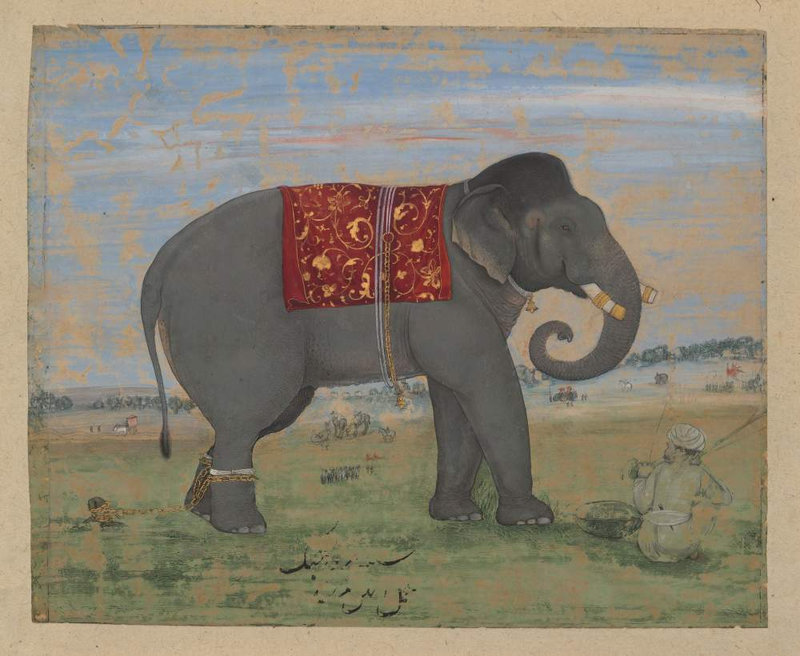
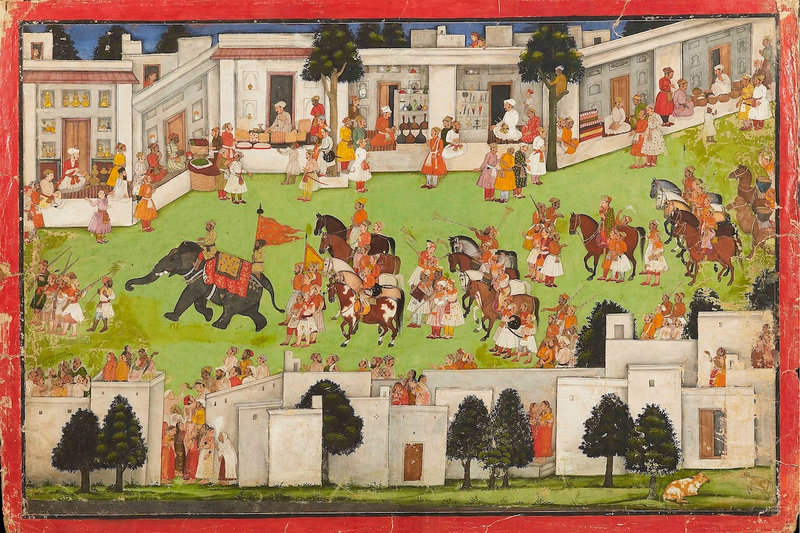
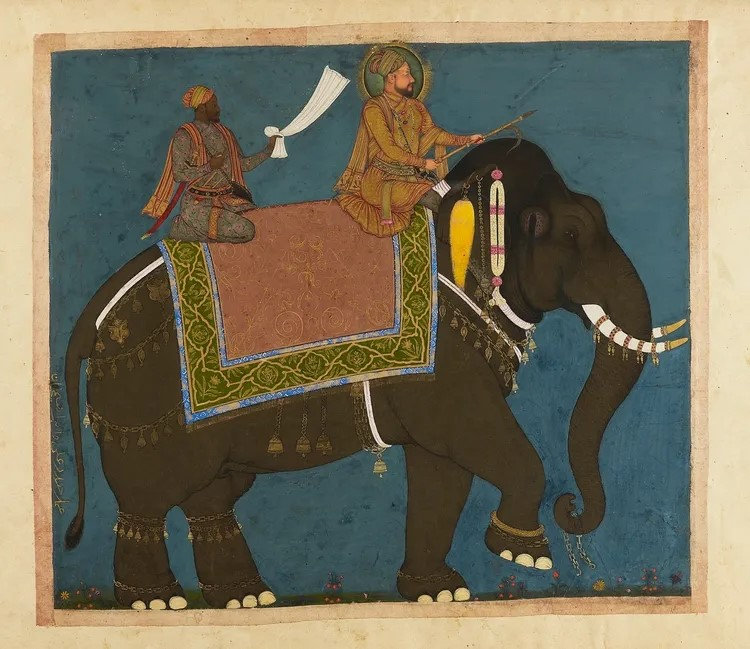
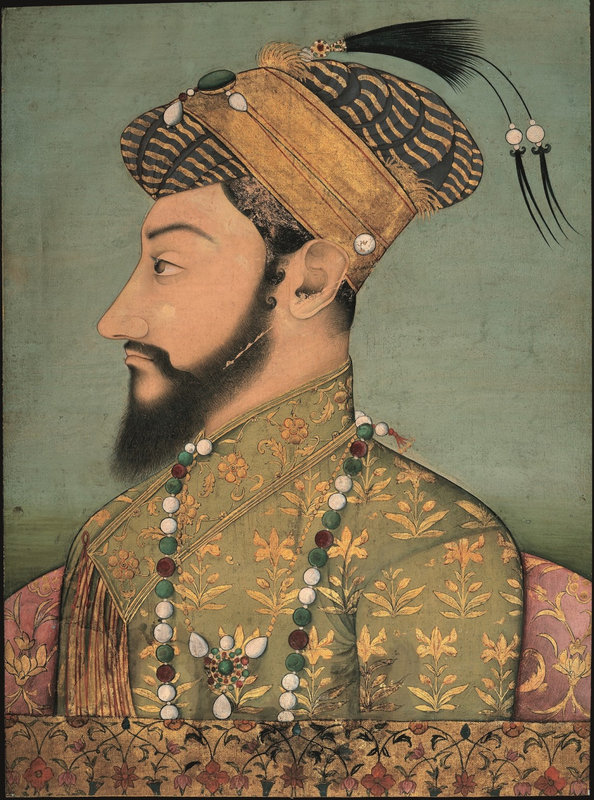
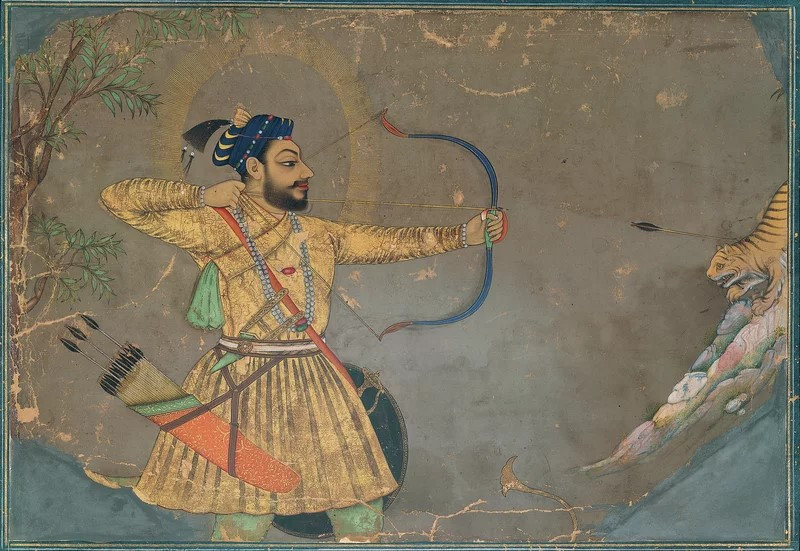
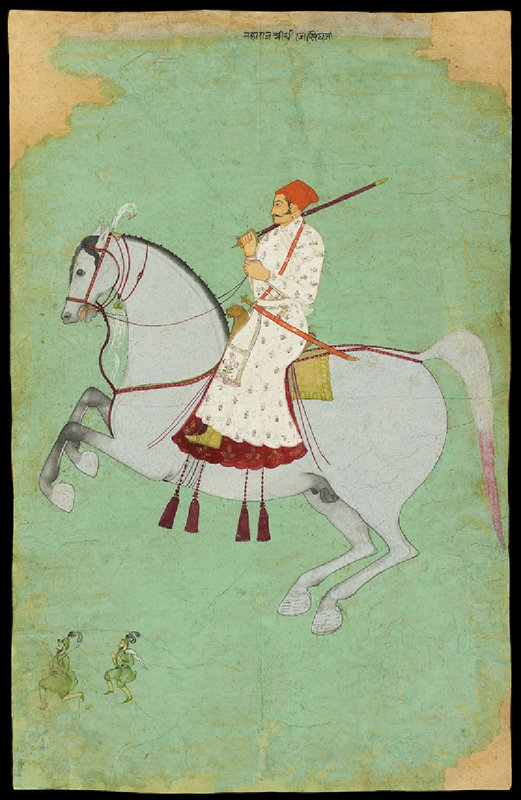

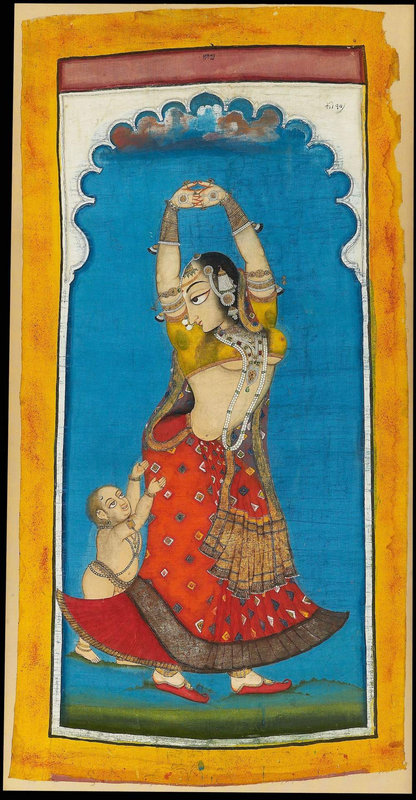



/image%2F1371349%2F20240510%2Fob_b52f4f_telechargement-7.jpg)
/image%2F1371349%2F20240510%2Fob_d79b73_telechargement-6.jpg)
/image%2F1371349%2F20240510%2Fob_bff4c3_telechargement-3.jpg)
/image%2F1371349%2F20240510%2Fob_25eb10_telechargement.jpg)